How (and Why) to Play Mahjong (Part 1)
Or Mah Jongg...or Mahjongg...
This is a series of posts detailing how to play Mahjong1. We’ll cover the history and elements of the game set in this post, but make sure to subscribe to get access to upcoming posts:2
Part 2: Dealing and The Charleston
Part 3: Playing to Win
I’m not typically a big game player, but I’ll be honest—I’ve been intrigued ever since my middle school friend started a company making adorable Mahjong sets (#influenced). Seeing her post photos of fun nights with friends and family around the table piqued my interest—especially since I’ve been feeling the pull to expand my circle lately. So, when I saw an email from our local community center that a five-week “Learn to Play Mahjong” class was starting the next day, I jumped on it.
Naturally, I asked a couple people if they wanted to join me so I didn’t have to do this alone. Unfortunately, my friend couldn’t commit to the timing, and my neighbor (yes that neighbor) said she’s “not a game person.” I can relate! In the end, I’m grateful for the rejections because it helped me meet new people—I’ve now been invited to two different weekly Mahjong gatherings.
After five weeks, I wouldn’t call myself an expert by any stretch of the imagination. However, instead of hoarding this knowledge until I feel like I’ve mastered everything (does that ever happen?), I’m sharing it now while it’s fresh in my mind. Let’s all learn together, shall we?
History of Mahjong
Mahjong is believed to have started in China in the late 1800s (although, according to National Geographic3, false marketing has many people believing it dates back much further to “ancient Chinese court”). It made its way to the US in the 1920s via American businessman Joseph P. Babcock and became a wildly popular cultural fad. My understanding is this modern flavor of the game is a bit different than the original. Sometimes you’ll hear it referred to as American Mahjong, which is what we’ll cover in this series.
Why Play Mahjong?
Get Smarter: The game has been shown to improve short-term memory, attention, and logical thinking4
Get Social: As a four-person (or sometimes three-person) game, it’s a chance to connect with friends or meet new people with similar interests5
Get Out and About: Mahjong is having a resurgence and growing in popularity among all ages. Hot hotels like The Standard, East Village, Ace Hotel New York, and The Charleston Place are all hosting Mahjong nights with huge RSVP lists.6
Game Elements
I have no doubt that there are varying rules and ways to play in different regions/communities. I’m sharing what I’ve learned, but I’d love to hear in the comments if you play differently. Let’s dive in.
Game Card
The National Mah Jongg League produces a new game card each year that has the official standard hands and rules for the year. Think of this as the master key to the game. It shows all the hands that can be played to achieve Mahjong—a set of 14 tiles that matches one of the official hands, which is how you win the game. Updated cards come out each April. This means that once you’ve finally mastered playing certain combinations, you’ll have to start over with a new card.
Tiles
It’s important to learn the names of the tiles. Not only will you need to recognize them for play, but you’ll also need to state which tile you’re discarding so all players can hear. There is a learning curve, but it’s easy to identify the tiles after a couple of practice games.
Suits
There are 3 suits in Mahjong—craks (short for Characters), bams (short for Bamboo), and dots (no abbreviation needed here). Each suit has 36 numbered tiles (four each of 1-9) and four dragons. Red dragons are associated with craks, green dragons go with bams, and white dragons (better known as soaps) go with dots.
Flowers
Flowers can be a bit confusing because the game pieces (depending on your set) show four flowers (which don’t all look like flowers) and four seasons (eight total). However, it’s generally understood that all of these tiles are referred to as flowers. Even though they have different words/images, they are all used in the same way. “A flower is a flower is a flower,” as my instructor put it.
Winds: NEWS
The Winds are labeled as North, East, South, and West. There are four each for 16 total Wind tiles. On the game card, sometimes you’ll see NEWS—this refers to using one North tile, one East tile, one West tile, and one South tile. More on this later.
Jokers
The eight jokers in the set are easy to spot and will become your best friend since they can be used as a wild card in many (but not all) situations. Jokers can never be used alone or in a pair.
Need Tiles?
If you’re in the market for a set of tiles, there are standard Mahjong tiles with the traditional characters (like the one I started with) or you can get unique, hand-crafted versions with fun and quirky designs (this is the one that influenced me to start learning the game!). Basic sets start around $50, and higher-end sets go for $300-$500—although I’ve seen them for more than $2k (If you’re buying one of those, please buy me one, too)!
Dice
A pair of standard dice is used to determine the dealer and how many tiles that person will keep when they push out their wall.
Rack
A rack is a device used to hold your tiles. It will generally have three features: an area to display tiles toward you (hidden from other players), an area to display tiles so all game players can see, and an arm (aka “pusher”) to push your “wall” of tiles to the center of the table. It’s not crucial to have a rack, but I think it makes things much easier.
Mat
The game mat not only defines your playing space but also protects your table from scratches, muffles noise, and keeps tiles in place easier. They’re often made from neoprene or foam rubber. A mat is definitely not necessary—especially if you play on something durable like a card table—but it might be nice if you’re playing on your heirloom dining table or if you’re trying to keep the game quieter. I think this one with the scalloped edge is especially fun.
If this feels like a lot of separate purchases, you’re not wrong. You may want to simplify things by buying a mahjong set that includes all the standard items listed above.
Table
Speaking of tables, it’s best to have a square or circle table where everyone can reach the center—I can speak from experience that a long dining table is too big. A card table or a square/round dining table (as long as it’s not too big) is perfect for the game. You definitely don’t need to buy a new table to play this game, but if you want to, might I suggest one with cup holders?
And don’t forget your game cards!
Other Mahjong Playing Methods
Mahjong Cards
In addition to the traditional tile games, Mahjong is also available as a card game. I prefer tiles, but cards could be great for traveling (easier to pack!) or playing where you don’t have space to spread out the tiles.
Online
There are several online Mahjong games available. The one I’ve used is Real Mah Jongg, but you can find a bunch of options on Google. You can choose to play against real people or a computer. This is a great way to play on your own because, unlike in real life, you don’t have to come up with 3 other players.
Next Up
Want to keep learning? Make sure to subscribe! I’ll be releasing parts 2 and 3 in the coming days. We’ll talk through how to deal the game, do the Charleston (don’t worry, you don’t have to dance), and play to win—or, in other words, Mahjong!
If you enjoyed this post, I invite you to give it a heart or restack and check out The Tea Library’s previous posts:
Mahjong is sometimes spelled Mah Jongg or Mahjongg. With the exception of brand names or quoting someone else, I’m using “Mahjong” since that’s how I see it written most frequently.
This post contains some affiliate links. If you make a purchase, I may make a small commission at no cost to you. This is a helpful way to support The Tea Library (along with paid subscriptions, of course). Thanks in advance if you purchase something through one of these links!



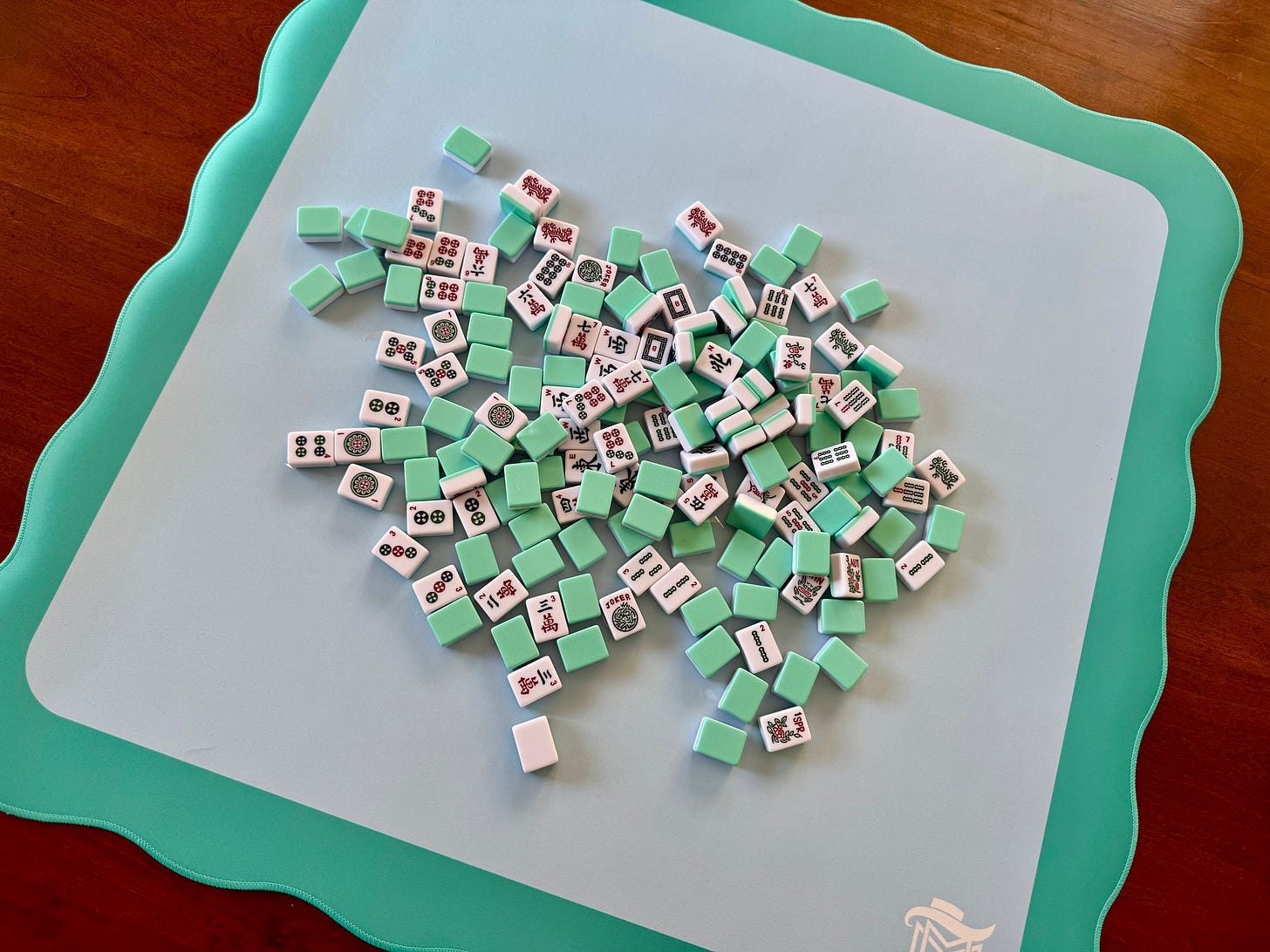
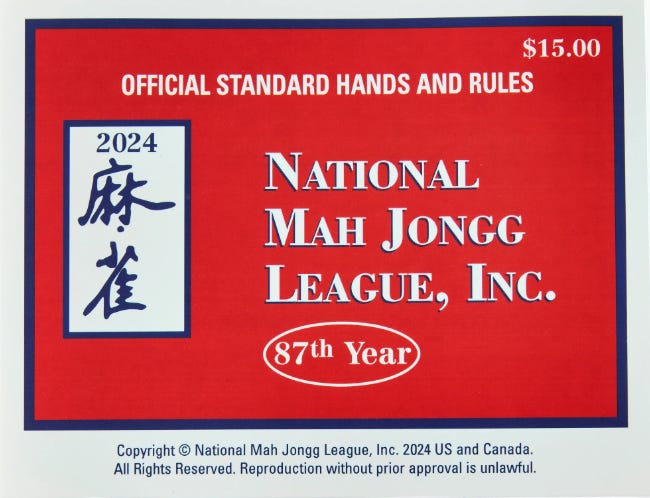
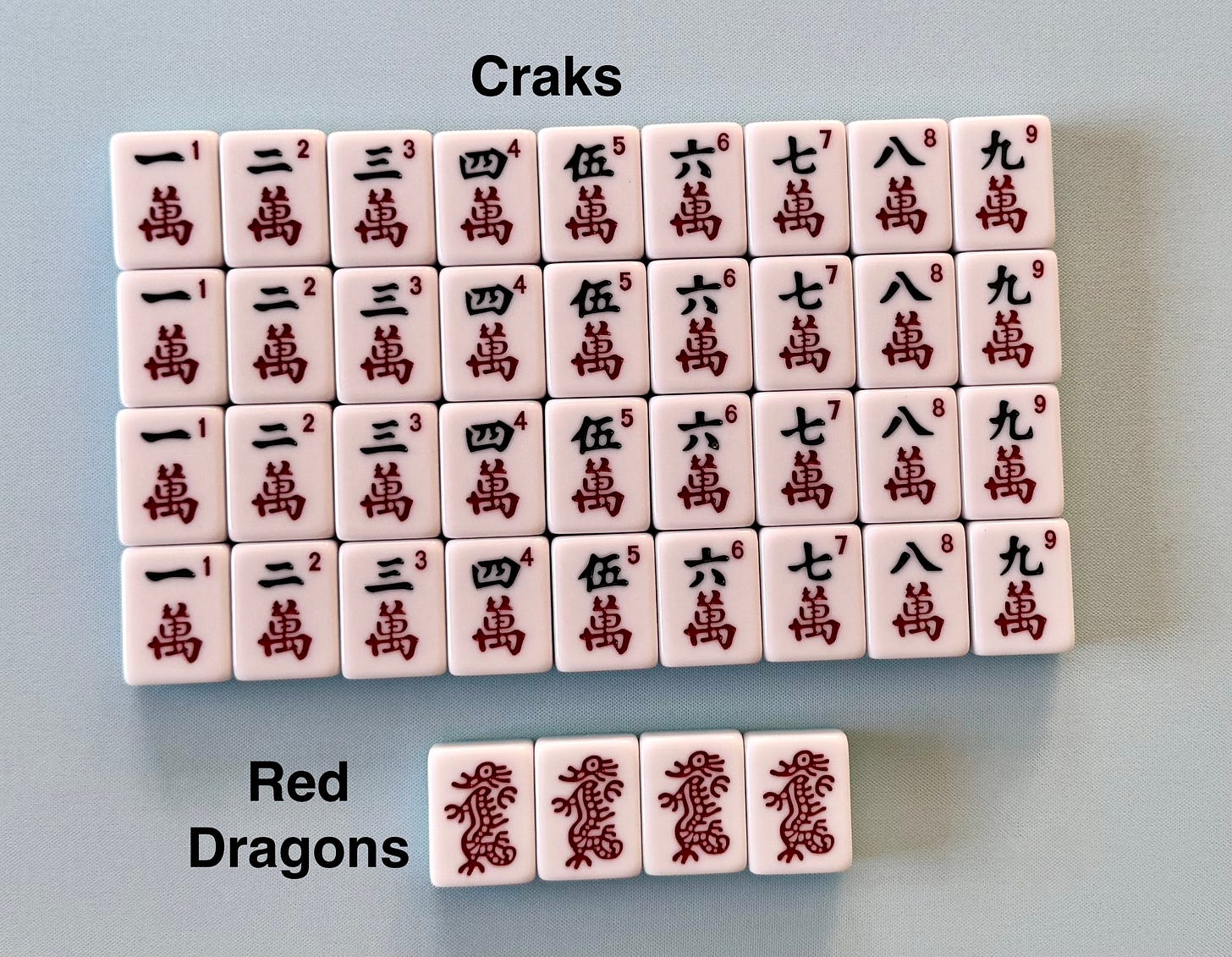
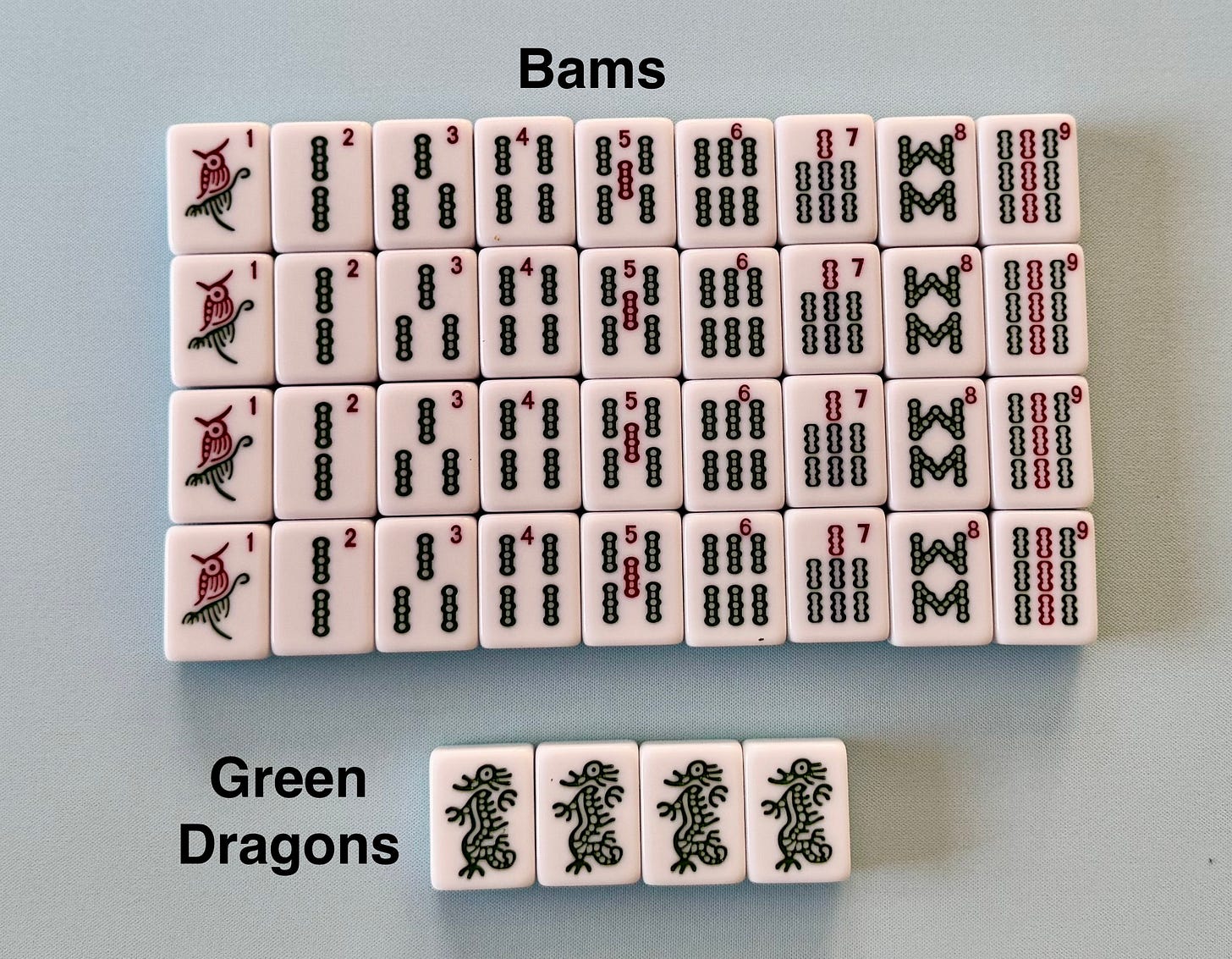
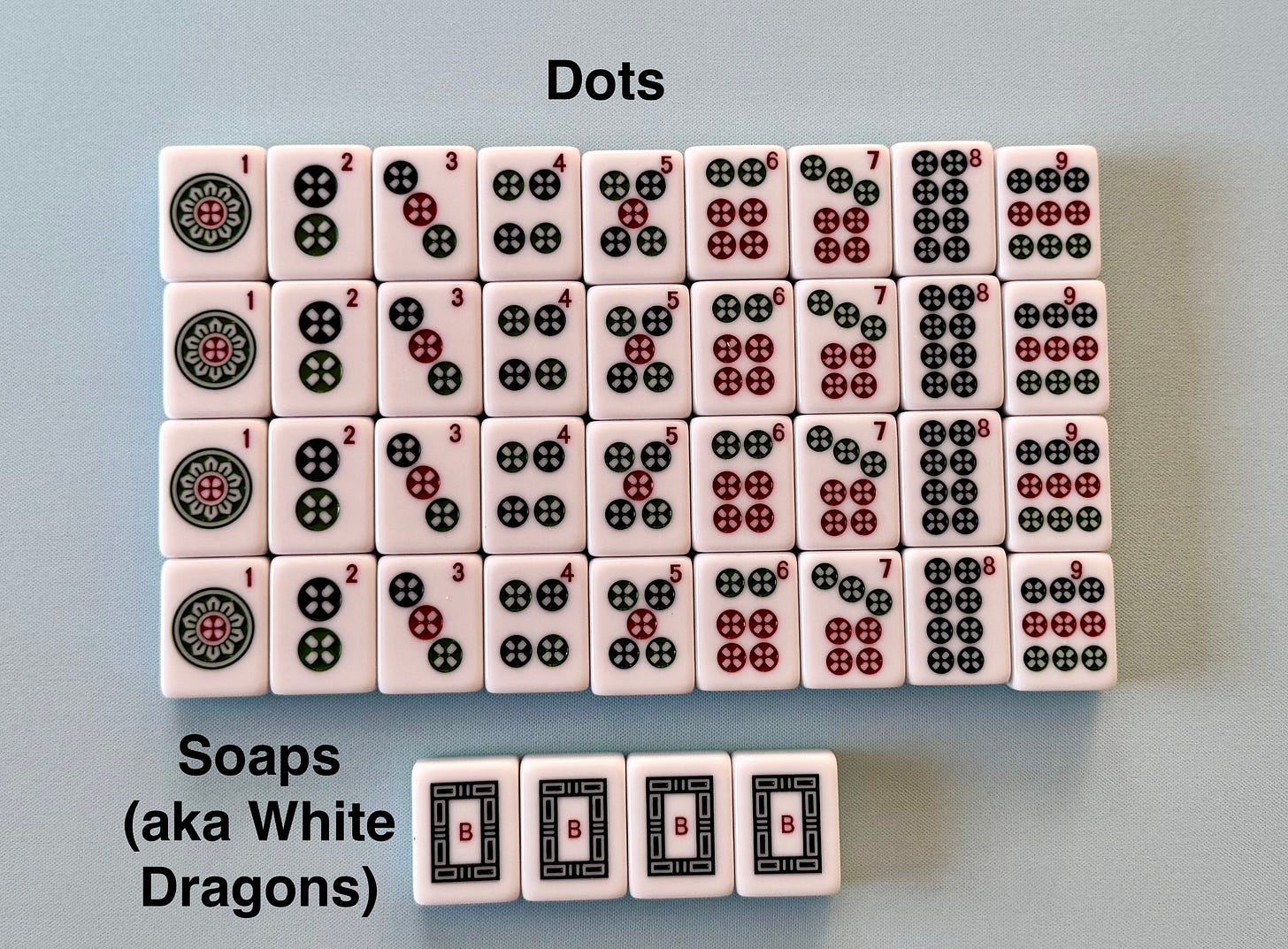

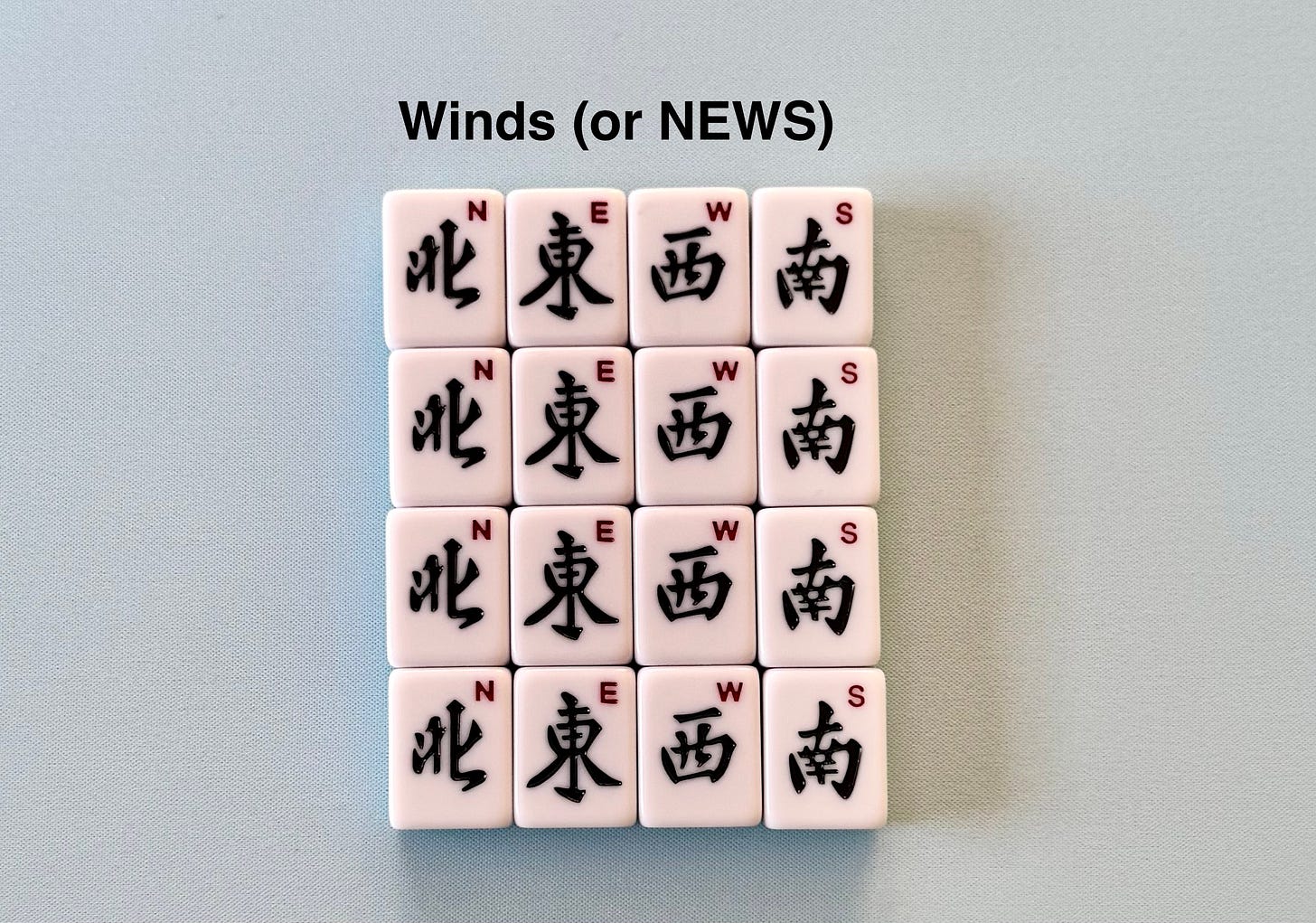
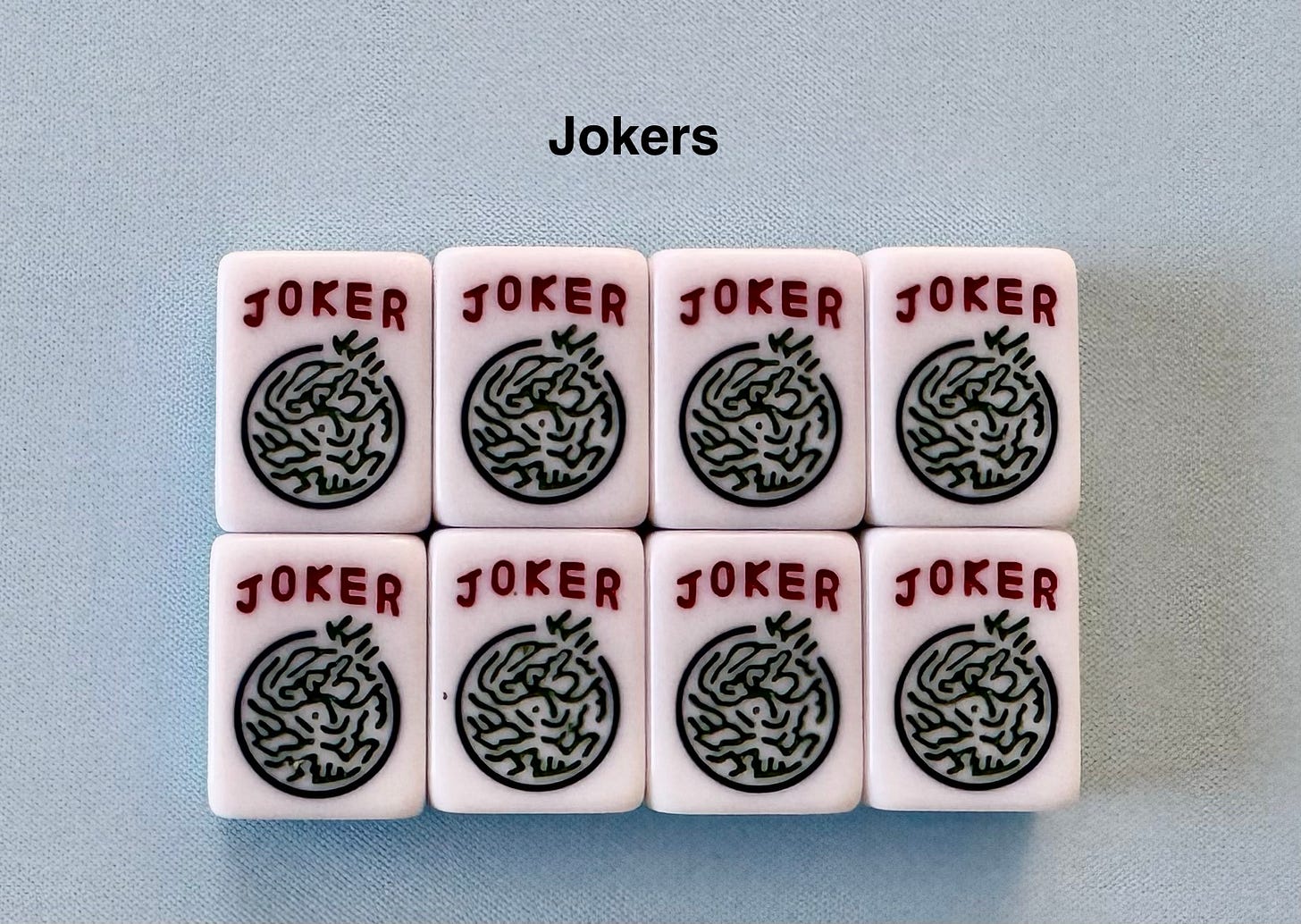



Thank you for sharing this, Kelly! I really enjoyed reading it. I have been wanting to play but finding it difficult to locate lessons or a group in my city. Maybe I can learn online and then start a group. :)
I love mahjong (albeit am very much a novice), and love how it's spreading! What's your friend's company?